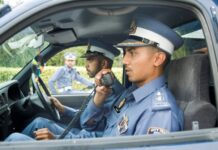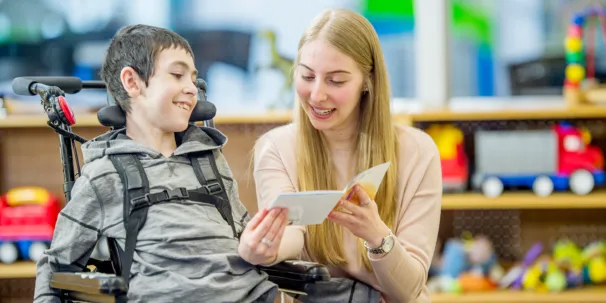In May I got the chance to attend a provincial consultative meeting on disability inclusion organized by UNICEF. Having a long experience of training teachers in inclusive education, this consultative meeting left me pondering upon expectations versus the real situation of inclusive education in Pakistan.
I read somewhere that “Inclusion is not bringing people into what already exists, it is making a new space, a better space for everyone.” We all should work together to create this space where everyone is accepted and appreciated the way he/she is. Let us all join hands to celebrate diversity and make this world a good place of living for ALL
In the last decade I have been a part of various meetings and policy dialogues. In almost every such discussion stakeholders put forth many valuable and relevant ideas to ensure disability inclusion. To me the most important areas that can contribute towards a more inclusive education system in our part of the world include accessible physical infrastructure, learning materials and technology and use of assistive aids. Side by side, teacher training, willingness of school management and on a larger scale advocacy and supportive legislation play an important role in making inclusion possible. Based on my practical experience, the following are few practical steps that can be taken for inclusion in schools.
An important key aspect is making school infrastructure accessible for diverse learners. Ramps, side rails, flexible classrooms, adequately illuminated learning places, use of high contrast or textures to indicate important junctions or milestones in building, predictable building design, and use of bigger font in all notices and signboards can be few examples of how buildings can be made accessible.
Similarly, learning material should be made available in the preferred mode of communication of the student. For example textbooks can be provided in hard copies, large prints, pdf or word files and audio formats. Considering the fact that Punjab text book board has already made e-books available on their website, the only thing needed is to make those books screen reader friendly. In the long run large print and audio options can also be incorporated to ensure that textbooks are accessible for diverse learners.
Another important aspect is personnel training and readiness because without taking teachers on board, efforts towards inclusion cannot be successful. Pre-service training should prepare prospective teachers for teaching diverse classrooms. The practicum should be made mandatory part of teacher training where they should teach classrooms having students with special needs alongside typically growing students. In-service training programmes should also allocate considerable time for teaching inclusive pedagogy. Online teacher training resources can also be utilized for this purpose.
Without involving community partners including parents in programme implementation and the review process the effects of inclusive education cannot translate into long-lasting societal change. Parents should be made an essential part of the decision making process. They not only play a crucial role in academic progress of their own child, but can also play a significant role in mobilizing community resources to support inclusion of differently abled in academic as well as other social settings.
A big barrier hindering inclusion of students with special needs in education is ever increasing focus on standardization and inflexible examination systems. Diversity-friendly education asks for a flexible and more holistic approach towards learning assessment. A three-hour written exam cannot provide equal opportunity to all students for demonstrating their learning. A more thorough, just and differentiated approach towards assessment is required to let inclusive education thrive in our country.
My suggestions might seem overwhelming or too resource-exhaustive to some readers. Let me share some insights from my practical interactions with teachers practicing inclusion in schools situated in different rural areas of KPK, Punjab and Gilgit Baltistan. As a trainer I got the opportunity to conduct a series of training sessions with these teachers during the last month. One thing that was common among all those teachers was that they had such big hearts filled with compassion and passion. It really amazed me that lack of resources and limited access to technology could not lower their commitment.
Through training sessions and informal interactions with them I tried to explore how they have become successful in making their rural schools inclusive. The most important things that I was able to identify included commitment of the higher management of the school. Inclusive education not only means providing accommodations and modifications for students with special needs, it also involves an overall change in the philosophy of the school. Committed and supportive higher management of the school becomes crucial in such a situation. Secondly I noticed that only those teachers were able to successfully transform their classrooms into diversity-friendly environments who had an inner urge to do so. Inclusion requires passion and dedication, therefore without teachers believing in the real soul of inclusion, it cannot be imposed on them.
Another important aspect that came into my notice was that teachers used their creativity to develop low cost teaching aids to support the learning of their students. In these efforts parents and community support also played an important role. Therefore, schools that have close contact with the parents and community and where teachers are willing to think out of the box, limited resources do not limit learning opportunities.
I have seen teachers transforming empty match boxes, bottle caps, cartons and other such waste material into amazing teaching aids. The only thing important is that they understood the requirements of their students and grasped the real objective of a specific learning activity.
Continuous professional development and hands-on trainings can play an important role in empowering teachers and making them ready for diverse classrooms. Special education institutes, having seasoned professionals and ample expertise can transform themselves into resource centers to help inclusive schools in staff development and differentiating instruction.
I read somewhere that “Inclusion is not bringing people into what already exists, it is making a new space, a better space for everyone.” We all should work together to create this space where everyone is accepted and appreciated the way he/she is. Let us all join hands to celebrate diversity and make this world a good place of living for ALL.





















